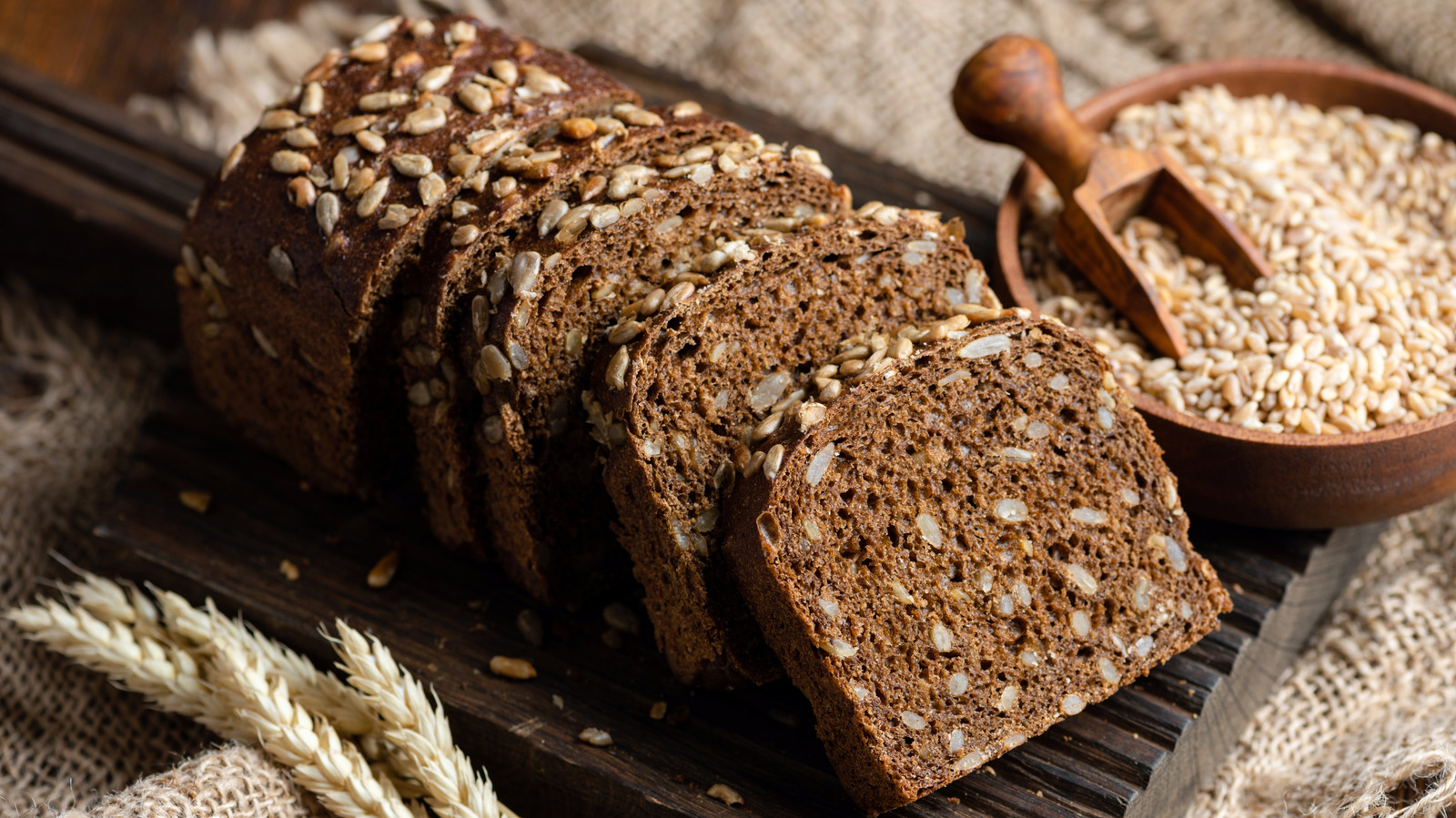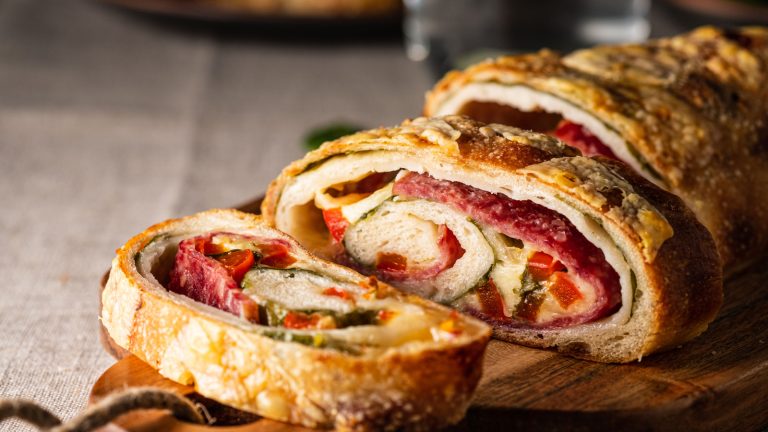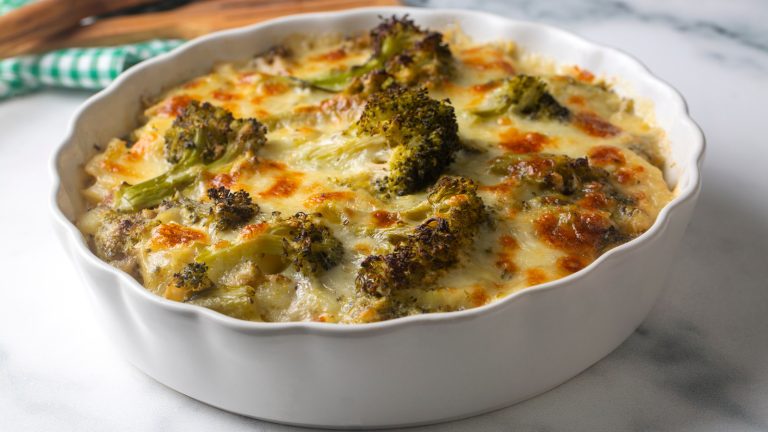Other than being an essential building block for the best Reuben sandwich, what do we really know about rye bread, and how does it differ from whole wheat? As it turns out, the difference is really quite simple. Rye bread, depending upon the type, is made with all or partial amounts of rye flour mixed with wheat flour, whereas whole wheat bread is made only with whole wheat flour.
Just as there are several types of whole wheat bread — think honey wheat, sprouted, 100% whole wheat, and multigrain — there are many types of rye. Some people prefer marbled rye for their corned beef and Swiss sandwiches, while others love a dense loaf of dark rye, slightly sweetened with molasses, and perfect for open-faced sandwiches with smoked salmon and cream cheese. Whole wheat is great toasted with butter and jam for breakfast, or for a turkey and avocado sandwich with bean sprouts. Beyond the type of flour used, the differences between rye and whole wheat ultimately lie in their texture and flavor.
What is rye bread?
To understand the bread, you’ve got to start with the flour. Rye is a wild grass, serendipitously discovered by ancient farmers in present-day Syria, a “weed” growing among their crops of wheat and barley. They quickly recognized the value of rye, a hearty grain that would grow in difficult weather conditions, and domesticated it around 13,000 years ago Although used to make beer and produce to feed livestock, rye berries are also ground into flour, one that contains less gluten than wheat, which is why rye bread, especially versions made with all rye flour, are less airy and dense than their wheat flour-based cousins.
To get a higher rise and airy crumb, many rye breads are made with a mixture of rye and wheat flours. Rye flour also absorbs moisture more readily, which in turn makes it more shelf-stable than wheat, and mixing it with wheat flour will help the bread be less gummy and dense. But probably the most significant characteristic of rye bread is its warm, malt taste which makes it the perfect backdrop for flavors like cinnamon, chocolate, ginger, fennel, cardamom, and anise. This is why a lot of rye bread features caraway seeds, which have that black licorice flavor. Many bakers will take advantage of its malty flavor, upgrading their rye breads into sweeter versions with lots of dried fruit and nuts.
What is whole wheat bread?
Generally believed to be older than rye, wheat was first developed in 10,000 B.C., in a part of the Middle East called the Fertile Crescent, an area that largely spans across modern-day southern Iraq, Lebanon, Jordan, Israel, Palestine, and Syria. When making whole wheat bread, the bran and germ pieces cut into the gluten strands, which creates a denser, less elastic bread dough. Although it’s heavier and moister than white bread, whole wheat is still softer and more airy than rye, and it also possesses a mildly sweet and nutty flavor.
More recently, consumption of and interest in whole grains, including both whole wheat and rye, has seen a wide-spread increase due to reputed health benefits, which influence market perceptions. Whole wheat flour includes both the bran and germ of the hard wheat berry, parts which are sifted out from regular white bread flour, giving whole wheat the edge over white bread in terms of fiber content and vitamin content. Rye is similar to whole wheat in its protein, fiber, and mineral content, making both a great choice.
To ensure you’re buying real whole wheat bread at the grocery store, make sure the grains on the ingredients list are prefaced with “100% whole” or “whole.” Also, the presence of the Whole Grains Stamp from the Whole Grains Council is a good indicator of a true whole wheat bread (though the stamp’s absence doesn’t necessarily mean the bread isn’t whole wheat). If you follow these tips, you’re well on your way to a tasty whole wheat peanut butter, bacon, and jelly sandwich or a grilled cheese that tastes like heaven.







